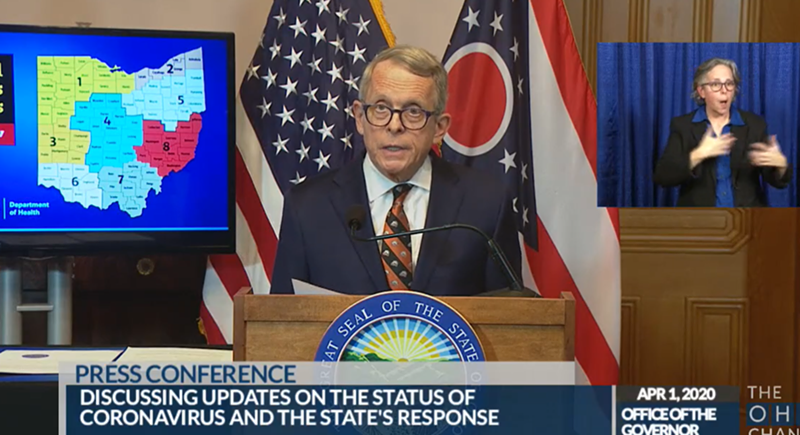After weeks of rocketing upward, the daily number of coronavirus infections in Ohio just might be leveling off.
But Gov. Mike DeWine and some of the state’s top health officials on Monday said that’s not good enough. If Ohioans keep getting infected at the rate they are, hospitals will have to take increasingly dire steps to deal with the situation.
“These numbers are not sustainable. Nobody thinks they are,” DeWine said. “Even if we’re flat (in the number of new infections) we’re filling up our hospitals.”
The Ohio Department of Health on Monday reported 9,275 new infections over the previous 24 hours, along with 336 new coronavirus hospitalizations. Ohio also crossed another somber milestone when the health department reported 63 more deaths, bringing the total to 7,022 since the beginning of the pandemic.
With new cases across the country nearly tripling earlier peaks in the pandemic, some observers have said the U.S. hospital system has passed the breaking point.
Bruce Vanderhoff, the health department’s medical director, said Ohio is being particularly hard hit.
“The country is in a very dangerous spot,” he said. “And there are a number of indications that Ohio is worse.”
Lisa Burich, a nurse at Mercy St. Elizabeth Hospital in Youngstown, said her facility is holding some critical patients in the emergency room to wait for beds to open up in the intensive care unit.
Across the state, at TriHealth Bethesda North Hospital near Cincinnati, officials are also feeling the strain.
“We are reaching capacity as well as having staffing problems,” C.J. Adams, the hospital’s nursing manager, said.
Vanderhoff said some hospitals already are cancelling some non-emergency procedures such as diagnostic tests, and unless the spread of the virus slows, many more will be.
“It’s almost like rolling blackouts,” he said. “It happens for a period of time and then hospitals are able to get those services back on track.”
If hospitals are subjected to further strain, “I think you’ll see hospitals very focused on just caring for the sickest people,” Vanderhoff said.
He added that more strain might lead hospitals to double up patients in rooms and treat some who are infected on an outpatient basis.
Some researchers believe that’s already happening.
Ashish Jha, dean of the Brown University School of Public Health, told The Atlantic that earlier in the pandemic, the number of covid patients admitted to the hospital in a given week was roughly equal to 3.5% of new covid cases reported a week earlier. That portion has subsequently dropped.
A likely reason: Now you have to be sicker with covid in order for some hospitals to admit you.
“The assumption we will always have a hospital bed for (you) is a false one,” a Nebraska doctor told the magazine.
Vanderhoff urged Ohioans stay home when they can — and when they can’t, mask up, stay socially distanced and wash hands to help bring down caseloads.
“These are very, very serious next steps,” he said of further actions to deal with burgeoning caseloads.
Despite the dire warnings, the disconnect between DeWine and his own party continued to glare on Monday. Many of the Republicans who run the General Assembly resist wearing masks, they’ve voted down a requirement to wear them in the Statehouse, and they’ve passed legislation that would gut DeWine’s ability to issue health orders.
Given the level of covid denial in the legislature, DeWine was asked if he thought it was safe to visit the Statehouse.
“Our guidance certainly hasn’t changed,” he said, declining to criticize his fellow Republicans.
This story was originally published by the Ohio Capital Journal


